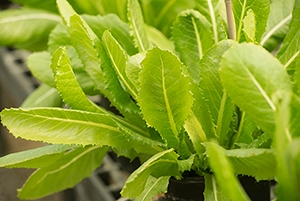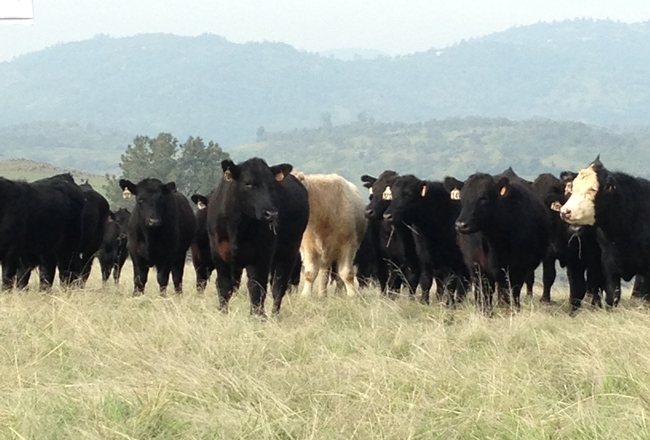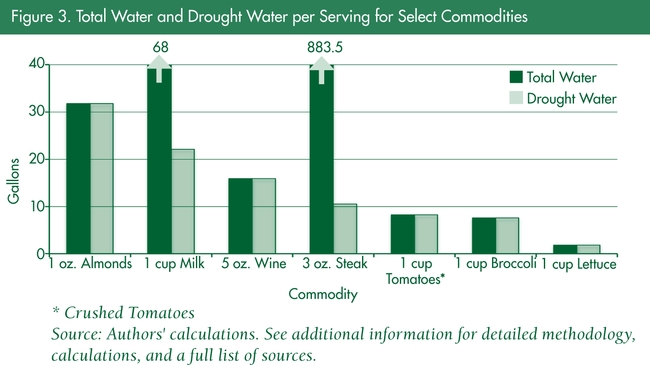Can you help fight the California drought by consuming only foods and beverages that require minimal water to produce?

To begin with, not all water drops are equal because not all water uses impact California's drought, the researchers explain.
Drought-relevant water
So just what water does qualify as California drought-relevant water? You can definitely count surface water and groundwater used for agricultural irrigation as well as water used for urban purposes, including industrial, commercial and household uses.
And here are a few examples of what water is not relevant to California's drought:

-- Water used in another state to produce young livestock that are later shipped to California for food production; and
-- Rain that falls on un-irrigated California pastureland. (Studies show that non-irrigated, grazed pastures actually release more water into streams and rivers than do un-grazed pastures, the researchers say.)
In short, California's drought-relevant water includes all irrigation water, but excludes rainfall on non-irrigated California pastures as well as any water that actually came from out-of-state sources and wound up in livestock feeds or young livestock eventually imported by California farmers and ranchers.
Also, the amount of water that soaks back into the ground following crop irrigation doesn't count – and that amount can be quantified for each crop.
Comparing water use for various foods
I think you're getting the picture; this water-for-food analysis is complicated. For this paper, the researchers examined five plant-based and two animal-based food products: almonds, wine, tomatoes, broccoli, lettuce, milk and beef steak.
In teasing out the accurate amount of water that can be attributed to each food, the researchers first calculated how much water must be applied to grow a serving of each crop or animal product. Then they backed off the amount of water that is not California drought-relevant water, arriving at a second figure for the amount of drought-relevant water used for each food.
They provide a terrific graph (Fig. 3) that makes this all quite clear, comparing total applied water with California drought-relevant water used for the seven food products.
Milk and steak top the chart in total water use, with 1 cup of milk requiring 68 total gallons of water and a 3-ounce steak requiring 883.5 total gallons of water.
But when only California drought-relevant water is considered, one cup of milk is shown to be using 22 gallons of water and that 3-oz steak is using just 10.5 gallons of water. (Remember, to accurately assess California drought-water usage, we had to back off rainwater on non-irrigated pastures and water applied out of state to raise young livestock or feed that eventually would be imported by California producers.)
“Remarkably, a serving of steak uses much less water than a serving of almonds, or a glass of milk or wine, and about the same as a serving of broccoli or stewed tomatoes,” write Sumner and Anderson.
Still skeptical? Check out their paper in the January-February issue of the “Update” newsletter of the Giannini Foundation of Agricultural Economics at http://bit.ly/1XKZxxC.
Bon appetit!
